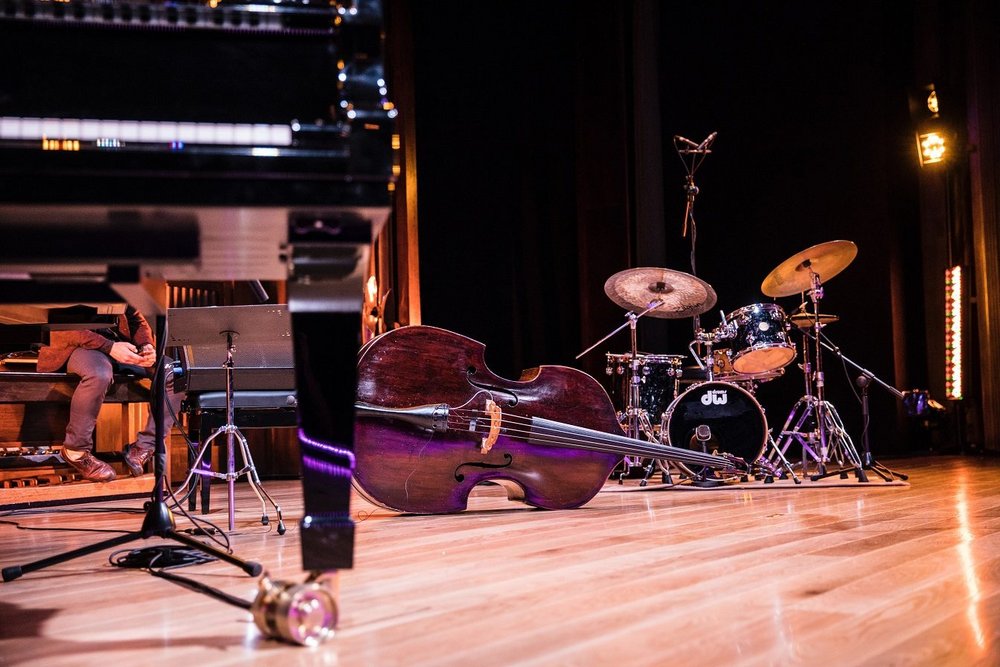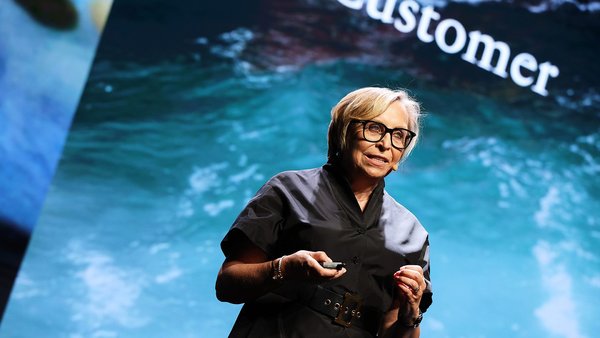Kara Buckner’s Strategy Diet /
Fallon's chief strategy officer shares her tips and techniques for better strategy.
James Swift
/
Photo by Tetiana Shevereva on Unsplash
Have you ever wanted to know what the ad industry’s sharpest strategists feed their brains on a daily basis, or what resources they swear by for tackling a brief?
We have. So we’re asking.
Kara Buckner is the president and chief strategy officer at Fallon. She join Fallon for the first time in 1997 and spent 13 years at the agency, working with clients including United Airlines and Sports Illustrated and rising to group account director. Buckner then left the agency in 2010 to build her own strategy consultancy where she worked with brands including Google and Twinkies. In 2019, Buckner returned to Fallon to serve as managing director and chief of strategy (and was later promoted to president). She has also helped to organise the agency’s DE&I group, the Come Up.
What media do you consume that makes you better at your job or helps you think about strategy generally?
As strategists, our jobs are weird. We’re handed a complex problem and then asked a more complex question: ‘What do we do?’
It’s usually early in the process, so we’re often starting from scratch. Which means we need to create. And creating is crazy hard.
Since it’s nearly impossible to have an original thought anymore, I find that creativity is often about Frankenstein-ing disparate things together in new ways, à la Snoop Dogg and Martha Stewart. Which means I need an extensive library of experiences and synapse-firing stimulus.
So travel is my life force and food is often my muse. (I used to say, ‘I love to cook.’ But that was a lie. What I really love to do is eat. Because it’s one of the only experiences where all five senses are engaged at once. And it’s damn delicious.)
While traveling and eating first-hand is best, I can’t trek around the planet or eat my face off constantly (although I try). So I live vicariously through travel and food content: Anthony Bourdain’s Parts Unknown, David Chang’s Ugly Delicious and Breakfast, Lunch & Dinner, Stanley Tucci’s Searching for Italy, and Men in Kilts (because what’s not to like about Sam Heughan and Graham McTavish road-tripping around Scotland?)
I also love listening to extraordinary people talk about how they make extraordinary things. And most recently, MasterClass has been my playground. Hearing Annie Leibovitz talk about portraiture wasn’t just about f-stops, it was about capturing humanity. Alicia Keys’s approach to songwriting was a window into creative genius. And Judd Apatow breaking down The 40-Year-Old-Virgin was a lesson in storytelling and tension. (Which is totally why we all saw the movie, right?)
Are there any resources that you typically turn to first when working on a brief?
Anything and everything that gives us a pulse on pop culture.
One of the things I learned early in my career from Pat Fallon himself was that pop culture was part of our jobs. It tells us what’s now and maybe even what’s next. It’s common ground for wide swathes of people. And for briefs, it’s a treasure trove of insights as well as great kindling for creative fires.
So we scan social platforms to get a sense of what people are talking and TikTok-ing about. We scour podcasts from The Ezra Klein Show to Smartless. We pay attention to what happened at the Met Gala and who Pete Davidson’s dating. We listen to music. We talk about art. And we watch stuff. A LOT of stuff. In part, because we specialize in positioning TV shows/movies for partners like Showtime, Paramount, etc. But also because there’s just so much good stuff out there. (I still haven’t watched The White Lotus finale yet, so I have to cover my ears whenever it comes up.)
But it’s all available for the taking. And if you embrace it and live it, you’ll have a never-ending smorgasbord of stimulus right at your fingertips.
Who is someone that you follow/read/watch for their opinions and ideas?
For me, it’s not so much about following a specific person, but more about seeking different perspectives – especially right now, because it feels like we’re so divided.
I actually think part of the reason there’s so much discord is because we spend too much time with people who think exactly like we do. Algorithms and hyper-personalisation deliver us what we like and agree with. Which is great. But it also means we’re less exposed to alternative views.
So I seek out different sides of an argument whenever I can. It’s why I flip back and forth between MSNBC and Fox News on election night. Why I read conversations between Gail Collins and Bret Stephens, and then try to supplement my New York Times with some New York Post. Why I find Supreme Court dissenting opinions fascinating. And was also a huge fan of the unlikely friendship between Ruth Bader Ginsburg and Antonin Scalia.
Kara Buckner, Fallon
Is there anyone or any resource that you think strategists rely on too much that is counterproductive?
Data. Data. Data. (And it’s not just strategists. It’s all of us!)
We are living in the golden age of information. Figures and facts – as well as the tools and techniques to extract them – are more plentiful than ever.
But it feels like we’ve become certifiably and undeniably DATA DRUNK. We’ve been wooed by numbers. Our judgment’s gotten cloudy. We’ve become overly enamored with what we can measure.
But not everything that matters can be measured. And not everything that can be measured matters. And while data is seemingly unlimited, it still has its limits.
To truly unleash its power, we believe data must be humanised. So when we dive into the infinity pool of info, we intentionally mix in culture, conversation, and emotion to give it real meaning. We talk to people. We look past what may be true to explore how it came to be. And while our insights and ideas are often inspired by data, we know they must be infused with human magic to ever amount to anything.
What do you think is the most underused resource for better strategy?
One of the least sexy tools you can possibly think of: Syndicated Research!
Seriously. Hear me out.
Often relegated to the media department, syndicated research is typically used to inform a plan or an audience. But at Fallon, our long-time research director (Mark Nelson) is a numeric Picasso and leverages it as an exploratory tool for uncovering insights.
Here’s a great example. Several years ago, we were working with International Delight, a coffee creamer brand. Prior to that, creamer was typically marketed as a wingman to coffee. The Solange to coffee’s flashier Beyoncé.
But as we analysed the heaviest users of creamer, we started seeing a unique trend in their food preferences. They didn’t just buy Betty Crocker cake mix, they bought Betty Crocker Super Moist Mocha with Swirls and Sprinkles. They didn’t just drink Dr. Pepper. They liked Diet Vanilla Cherry Dr. Pepper. Across dozens of different categories, they didn’t want the most basic or even slightly kicked up option of anything. Instead, they wanted the most supercharged, flavour-bombed version of everything.
We formed a hypothesis that we proved out in qual: These people didn’t want coffee that tasted like coffee. They wanted coffee that tasted like CANDY. For them, creamer didn’t ride shotgun. It was the sugar-fueled, amaretto salted caramel main event—topped with an entire bowl of cherries.
We christened them Flavor Nation and positioned International Delight as a party in a cup. The resulting work was a completely fresh take on the category that drove results and quickly made people rethink coffee—and most importantly, creamer.
Is there anywhere you go when you’re struggling with a brief or a place that seems to help you work or think?
I often do my best thinking when I’m not thinking.
I haven’t tried to access the hypnagogic state—that funky phase between wakefulness and sleep where it’s believed we have our most creative ideas. (Edison, Einstein, and others were rumoured to doze off holding something in one hand, so they’d wake up when it hit the floor, and then scramble to jot down whatever came to mind.) But I do ascribe to the idea that our brain does some of its best work when we’re focused on other things.
Over the years, I’ve realized that when I take a break from concentrating on something intently (to have a glass of wine with a friend, go for a walk, or binge-watch a show), things come to me more easily.
And when I’ve been lucky enough to take a significant break (like a two-week vacation or pseudo-early retirement), I’ve been shocked by how much faster ideas flow. There’s actually a book called Out of My Skull: The Psychology of Boredom (by James Danckert and John Eastwood) that explores how boredom can spark creativity – in case you ironically have nothing to do and want a little inspiration.

Photo by Dolo Iglesias on Unsplash
Office etiquette: music or no music?
In the office, definitely music. At home, it depends on what I’m doing. If I’m reading something, it has to be quiet. If I’m writing something, I need energy. And my playlist is always changing. Sometimes it’s jazz. Sometimes it’s Lil Nas X and Lizzo. I went through a Janet Jackson phase last year. I don’t know what that was about. But it was glorious.
What’s the best free resource for a strategist?
Other strategists!
There is absolutely no substitute for gathering brilliant minds together and hashing a thing out. At Fallon, I’m lucky to have an all-star team of thinkers, many of whom I’ve known for 15 or 20 years. And I love it when we can just jump into a room, break out a white board, and interrogate a question from 700 different angles.
Sometimes, we’re not even talking about a specific project or the brand dilemma du jour. We might just be sitting around the office or chatting during a weekly status call when the conversation will start to wander in all the best ways. In one moment, we’re debating Kahneman’s System 1 vs System 2 thinking, and in the next, we’re comparing Elon Musk 2021 to Elon Musk 2022.
When you get interesting people together, interesting conversations are inevitable. And it’s one of my absolute favorite things about my job.
What sort of media/resources would you recommend to someone just starting their career as a strategist?
I was thinking back to what I did in my early days and just glanced over at the shelf in my office (because I’m so old that when I started in this business, I bought actual BOOKS).
I think one of the keys to being good at what we do is appreciating that our craft exists at the intersection of art and commerce. So it’s critical to be curious about creativity and business. There’s still some great wisdom in those older titles: Positioning by Al Ries and Jack Trout, Good to Great by Jim Collins, Eating the Big Fish by Adam Morgan, Blue Ocean Strategy by Renée Mauborgne and W Chan Kim, and Juicing the Orange by Fred Senn and Pat Fallon (I’m admittedly biased, but it’s an excellent read).
That said, our industry is also evolving minute to minute. And if you don’t stay current, you’re done. So in addition to a healthy dose of timeless concepts and theory (à la the bookshelf), pay attention to the best new work and immerse yourself in as many cases as possible. Effies, Chiats, award-winning work from Cannes, and the podcast On Strategy Showcase (which tells the stories behind the stories of great campaigns), to name a few.
Sound Fundamentals + Modern Applications = Strategy Superstardom
Sorry, that’s probably an overpromise.
Or is it?

Photo by Grant Thomas on Unsplash
What’s something that happened in pop culture that showed a better understanding of people than advertising?
So many options to choose from. The death of Queen Elizabeth. The Renaissance of Queen Bey. Top Gun returns. Bennifer reunites. Will Smith vs Chris Rock. Florence Pugh vs Olivia Wilde vs Harry Styles vs Chris Pine (with a little Ted Lasso tossed in).
But here’s one that’s very recent—and very heartening.
I mentioned earlier that it feels like we’re living in a terribly divided world, and there’s very little we can agree on or rally around. But when Damar Hamlin collapsed during the Buffalo Bills-Cincinnati Bengals game, it felt like everyone was suddenly hoping for the same thing.
And what’s even more amazing is how we all responded. Usually, we’d expect the NFL (a league that plays no matter what) to continue the game. But they postponed it. In the past, we might’ve seen ESPN replay the clip repeatedly, but they didn’t. Tough-as-nails athletes were brought to tears and to their knees. Fans and supporters were brought to the stadium in droves. And Hamlin’s charity toy drive (which had raised just a few grand before the holidays) has since ballooned to over $7 million dollars.
All of it could’ve gone differently. But in a moment that mattered, people showed up with compassion and care. And at a time when there are so many wacky-ass things going on around us, it’s reassuring to know some hope and humanity can still go a long way.
Want more of the same? /
We don’t just write about best-in-class campaigns, interviews and trends. Our Members also receive access to briefings, online training, webinars, live events and much more.







